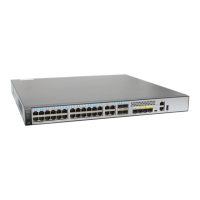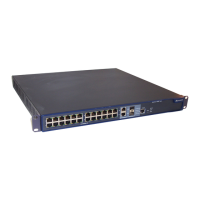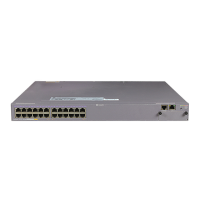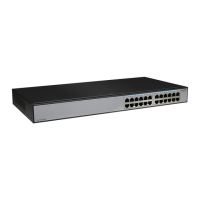Command Manual – QoS/ACL
Quidway S8500 Series Routing Switches Chapter 2 QoS Commands
Huawei Technologies Proprietary
2-42
can also assign a system index for it when delivering an ACL rule with this command.
However, you are not recommended to manually assign a system index if not urgently
necessary.
cpu: Redirects packets to the CPU.
interface interface-type interface-number destination-vlan { l2-vpn | l3-vpn : Redirects
packets to the specified Ethernet port. interface-number and interface-type together
can define a port. destination-vlan { l2-vpn | l3-vpn } is used to redirect MPLS packets.
l2-vpn means that MPLS l2-vpn packets are allowed to pass, and l3-vpn means that
MPLS l3-vpn packets are allowed to pass. destination-vlan must be the VLAN where
the destination port belongs to.
next-hop ip-addr1 [ ip-addr2 ]: Redirects packets to the specified IP address. You can
define two IP addresses at a stoke, but the first one is with higher priority. That is, the
system redirects packets to the second IP address only if the first one is unreachable.
slot slotid: Redirects packets to the specified service processor card.
vlanid: Specifies the VLAN of the packets to be redirected.
join-vlan: if this key word is specified, and if redirection is enabled, the system will add
the port into the destination-vlan automatically; if redirection is disabled, the system will
remove the port from VLAN, if the last join-vlan enabled redirection in VLAN is deleted.
This field should be specified in the redirection applications related to MPLS (such as
VPLS, L3VPN and interchangeably plugged cards). Only the Ethernet and
GigabitEthernet port views support join-vlan currently.
Description
Use the traffic-redirect command to activate an ACL and configure traffic redirection.
Use the undo traffic-redirect command to remove traffic redirection setting.
You can redirect packets to the CPU, a specified Ethernet port, a specified IP address
or a specified slot.

